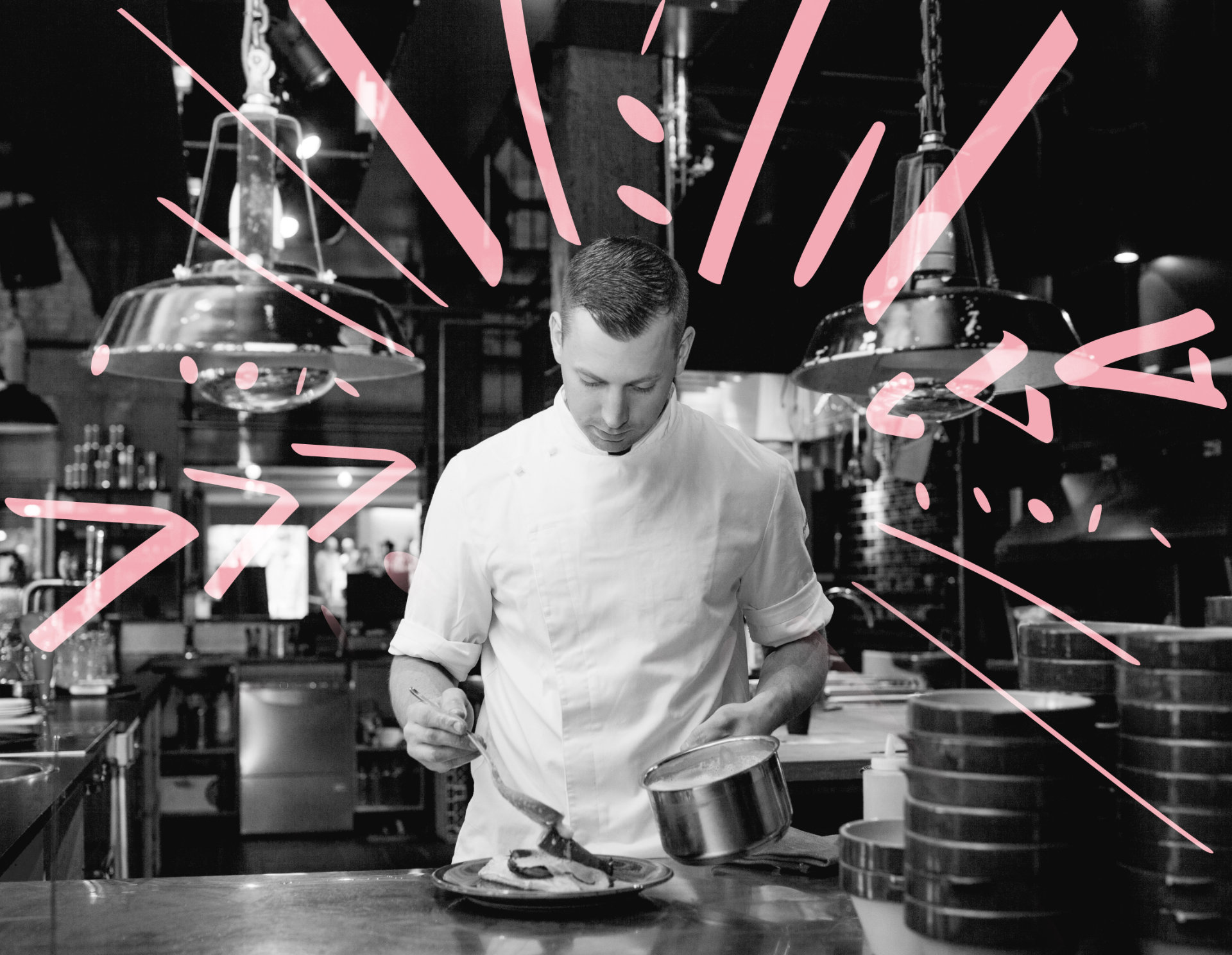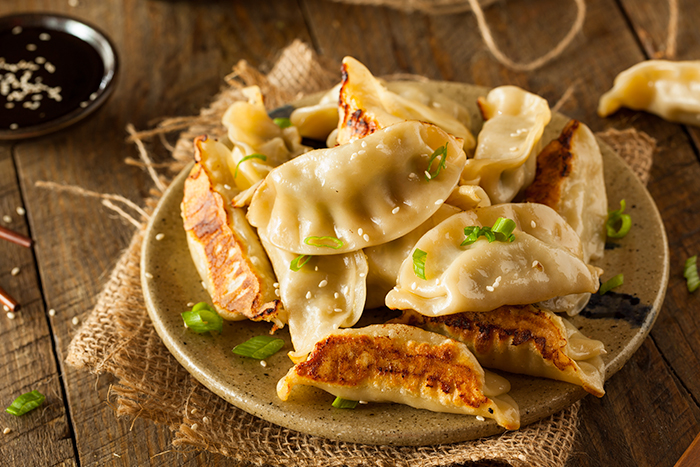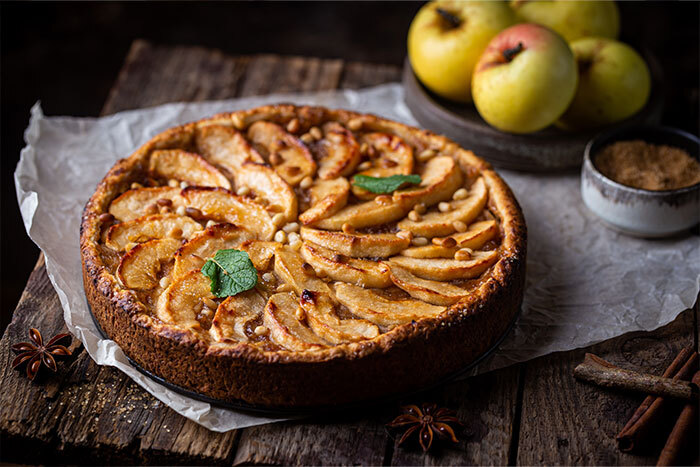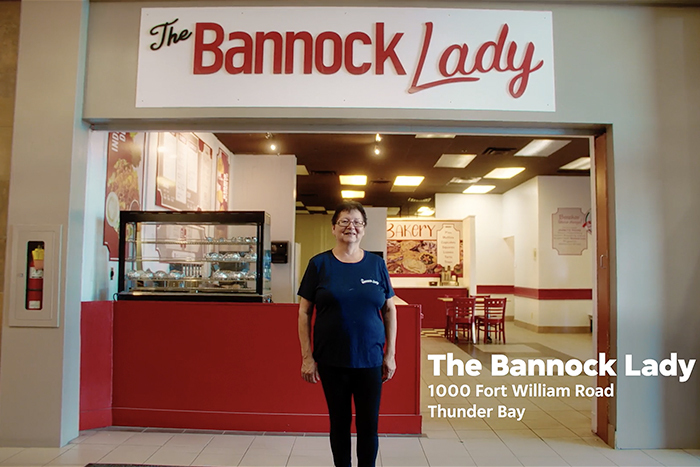Discover the unique flavours and fascinating origins in our rundown of 8 Canuck favourites.
Sweeten the deal with Nanaimo Bars.
WHAT IT IS: Dubbed “Canada’s Favourite Dessert,” these sweet little squares combine layers of nuts, cookie, buttercream custard, and chocolate.
WHERE YOU CAN GET THEM: They’re readily available at local bakeries, markets, grocery stores, and restaurant menus –— or at your grandmother’s next holiday party!
WHERE THEY CAME FROM: While there are varying claims laid to their creation, the first known recipe appeared in the 1952 Women’s Auxiliary of the Nanaimo Hospital Cookbook simply labelled “chocolate squares.” However, the following year, a similar recipe published in Vancouver’s Edith Adams’ Cookbook had a new (long-lasting) name: Nanaimo Bars.
FUN FOOD FACT: The easily transported bars were popular amongst Nanaimo’s coal miners in the early part of the 20th century.
Carbo-load on Bannock.
WHAT IT IS: A large quick flatbread, made with unleavened flour, lard, salt, water and baking powder, often cut into sections before serving.
WHERE YOU CAN GET IT: They’re a popular staple in many Indigenous communities throughout the country.
WHERE IT CAME FROM: While Scottish in origin, early settlers and fur traders brought the recipe with them to North America. Before long, it was a favourite in Canada’s Indigenous communities.
FUN FOOD FACT: There are many different names for bannock across communities, including palauga (Inuit), luskinikn (Mi’kmaq), and ba‘wezhiganag (Ojibwa).
Boozy brunch with a Bloody Caesar.
WHAT IT IS: Canada’s answer to the Bloody Mary, a spicy cocktail of Clamato juice, Worcestershire sauce, hot sauce, vodka, lemon, and a celery-stalk garnish.
WHERE YOU CAN GET IT: Most bars and restaurants across the country will whip one up, and they’re a brunch staple…especially after a night out on the town.
WHERE IT CAME FROM: While other similar concoctions came earlier, the Caesar was created in 1969 by Calgary’s Walter Chell, manager of the Italian restaurant at the Calgary Inn. Inspired by his own Italian ancestry, the idea came from Spaghetti alle vongole — pasta in a tomato and clam sauce, and named for the iconic Roman general.
FUN FOOD FACT: Mott’s introduced their Clamato juice in 1969, and while sales were initially slow, they increased as word of the Caesar spread across the country.
Chinese food goes west with Ginger Beef.
WHAT IT IS: The Chinese-takeout favourite, consisting of battered and fried strips of beef in a spicy sauce, was created in Canada.
WHERE YOU CAN GET IT: For years, you could only find it in Chinese restaurants — and even some pubs — in Calgary. Today, it’s made its way across the country.
WHERE IT CAME FROM: Chef George Wong brought the recipe to Calgary’s Silver Inn in the 1970s, based on a westernized version of Chinese cuisine he made while working at pubs in the U.K.
FUN FOOD FACT: In 2013, the Royal Alberta Museum once hosted a food-truck competition dubbed the “Ginger Beef Throw Down.”
Dive fork-first into Saskatoon Berry Pie.
WHAT IT IS: The Prairie provinces’ beloved Saskatoon berries, wrapped in fluffy pastry, and often topped with vanilla ice cream.
WHERE YOU CAN GET IT: Wherever fine baked goods are sold in the Prairie provinces.
WHERE IT CAME FROM: Indigenous peoples have used the hearty, blueberry-esque fruits in teas, bannock, and pemmican for centuries. (And “Saskatoon” actually comes from the Cree word for the fruit, misâskwatômina.)
FUN FOOD FACT: Saskatoon Berry Pie was even immortalized with its own official stamp from Canada Post in 2019.
Warm up with Caribou Stew.
WHAT IT IS: This rich, hearty, stew is made with vegetables and tender caribou meat. (And perfect with a piece of fresh bannock.)
WHERE YOU CAN GET IT: A piping-hot favourite in the kitchens of the Northwest Territories.
WHERE IT CAME FROM: Caribou stew has been a staple, warming up Arctic communities for centuries.
FUN FOOD FACT: If caribou is unavailable, it can be replaced with elk, venison, or beef.
Flake out with Butter Tarts.
WHAT IT IS: A small flakey pastry with a sweet filling made with butter, sugar, maple syrup, and egg (and some variations including raisins and nuts.)
WHERE YOU CAN GET THEM: These little guys are popular across Canada’s English-speaking provinces.
WHERE THEY CAME FROM: In 1900, Mrs. Mary Ethel MacLeod, from Barrie, Ontario, submitted her recipe to The Women’s Auxiliary of the Royal Victoria Hospital Cookbook. Today, the original cookbook and recipe can be seen in the Simcoe County Archives.
FUN FOOD FACT: Quebec’s similar sugar pie has French origins dating back to the 1600s!
Get your vitamins with Muktuk.
WHAT IT IS: Muktuk, the layer of skin and fat of the marine mammals including whales and narwhals, and high in vitamin C.
WHERE YOU CAN GET IT: At food markets in Nunavut’s Arctic Bay.
WHERE IT CAME FROM: A tradition amongst Inuit communities, they would often begin eating muktuk right after a hunt.
FUN FOOD FACT: It’s often enjoyed dried or raw as a snack with HP Sauce.
Late-night snack with Poutine.
WHAT IT IS: The brilliantly delicious Québécois dish is a combination of French fries, cheese curds, and gravy – perhaps the most beloved, best-known, (and most mispronounced) dish in all of Canada.
WHERE YOU CAN GET IT: Poutineries, chip trucks, diners, and fast-food restaurants across the country.
WHERE IT CAME FROM: This is another one that has various stories of its origin. Some say it first appeared in 1950s rural Québec and started as fries and gravy, with a side of curds; while others claim it was fries and curds, and the gravy added to keep them all warm.
FUN FOOD FACT: Poutine ranked 10th in the CBC’s survey of The Greatest Canadian Invention.
Summer by the Atlantic Ocean with Lobster Rolls.
WHAT IT IS: Lobster meat, butter, and salt and pepper served on a grilled hot-dog-style bun – often served with some potato chips and pickles.
WHERE YOU CAN GET IT: Readily available at local diners, sea-side food trucks, and even finer dining establishments.
WHERE IT CAME FROM: Before lobster became a luxury food, working-class communities would host parties with piles of lobster to enjoy. The next day, the left-over meat was made into lobster rolls.
FUN FOOD FACT: McDonald’s in the Atlantic provinces often offer lobster rolls on their summer menu.
Before wrap, explore these popular restaurant dishes from the world.




